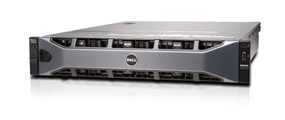

The requirements for data protection continue to evolve with the changing IT environment as well as the need to protect an increasing amount of data.
My experience in the area of data protection began in the late 1980’s when the only option for data backup was a tape device. During this era and continuing still to this day, tape repositories continue to grow in both speed and capacities. The improvements over the years makes tape backup still a reasonable solution for many customers as it meets their speed and capacity requirements. It also provides a portability of the tapes for offsite storage and allows customers to meet long term retention requirements. However tape based backups come with their own set of issues. Primarily the management of multiple tapes that backup administrators must manage both on-site and off-site. The backup media can also become very expensive if there are a lot of tapes to manage, rotate and replace over time. With an offsite rotation scheme, it can also take time to recall tapes for recovery when recovery times are the most critical.
For the past fifteen plus years I have seen the push by many backup administrators to either move away from tape or use tape to augment their backup to disk strategy. Meaning, backup administrators may want to backup to disk first then go to tape for long term storage. This solves a lot of concerns regarding speedy recovery times and reduces the overall number of tapes to manage. However, with the storage consumption of the primary backup to a disk location can become astronomical in size and costly to manage. These issues and more, have made the introduction of the Purpose Built Backup Appliance (PBBA) a welcomed solution to many backup administrators.
Purpose Built Backup Appliance (PBBA) combine both storage and computing power into a single server that is optimized for storing backup data. These appliances are designed for simple setup as a target to the backup software, many times referred to as the Data Mover. While a PBBA may not solve all customer backup repository requirements, it does provide backup administrators with greater flexibility when choosing a repository for backup data. An appliance can also improve backup performance by writing to the appliance first and doing a tape out as needed for long term retention requirments. A PBBA also allows for multiple streams of data to be written from multiple backup jobs to a central appliance. PBBAs are easy to add to most backup environments already in place without having to make significant architect changes to existing backup environments.
Key things to look for in a Purpose Built appliance are as follow:
- Hardened OS to prevent the risk of data lost
- Redundant hardware components such as power and multiple redundant NICs
- Appropriate raid configuration to protect against disk failures
- Easy setup and management of the appliance
- Deduplication of backup data, both inline and at the source
- Multiple protocol support
- Compression ratios
- Capacity of the appliance as well as dedupe and compression ratios
- Ability to easily expand storage repository
- Ability to replicate change data efficiently to remote sites
- Encryption of data at rest
- Support for a multitude of Data Mover in the market place
For more information on Quest PBBA offerings https://www.quest.com/products/dr-series-disk-backup-appliances/


